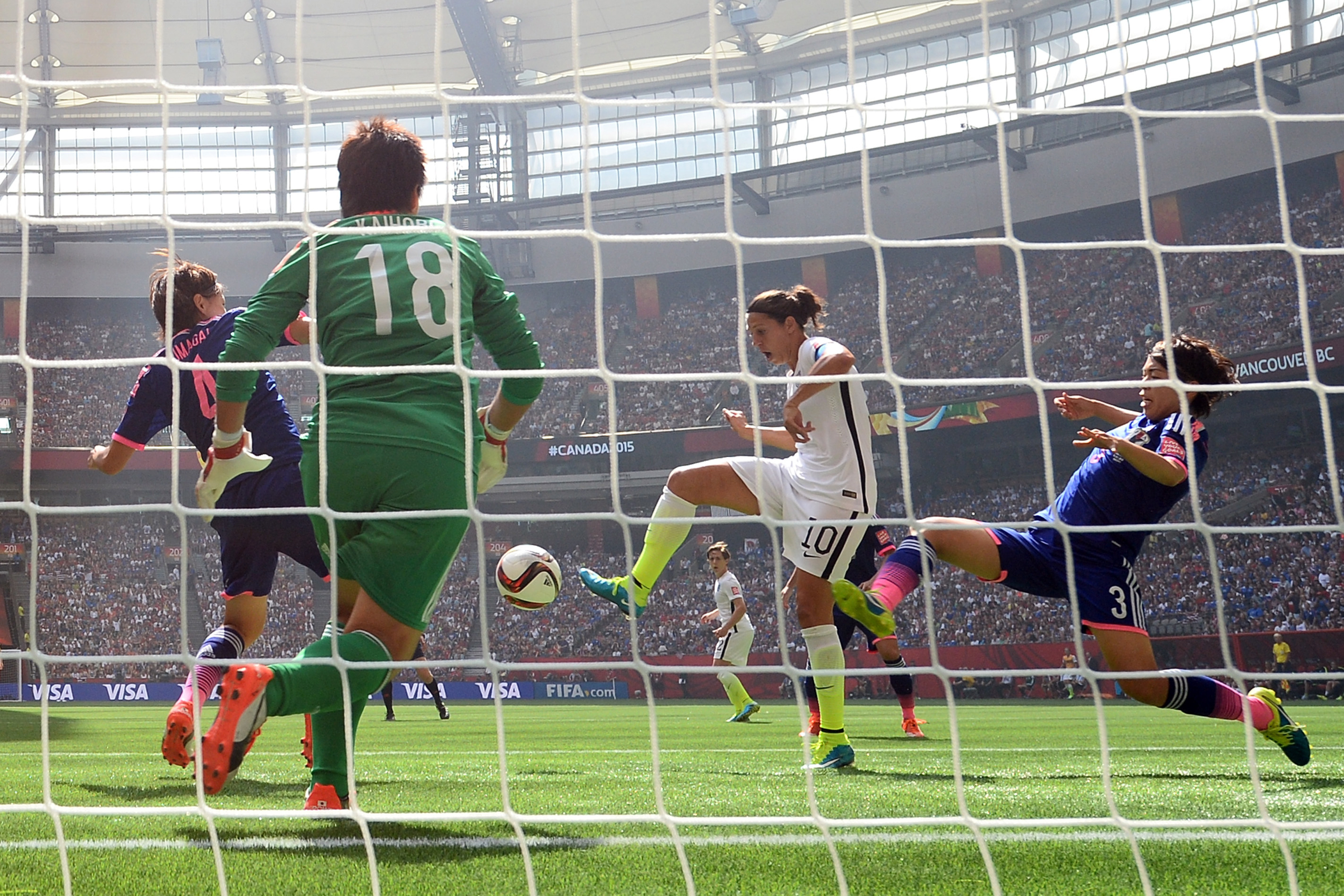The biggest match in the World Cup: Nike vs. Adidas
The World Cup starts this Thursday, but a match of a different sort is already well under way: the sales competition between Nike and Adidas.
The two companies go at it year after year, but the World Cup is a rare opportunity to market products to the entire world.
In Portland, Oregon, the walls of Tursi Soccer Store are lined with shoes.
“So Nike and Adidas comes here and does this,” says Jim Tursi, pointing to the walls of his store. “They come in and actually put all the displays up. We give them half the store each and they get to do what they want with it.”
The store’s displays looks like something out of a modern art museum, the lighting just perfect, holding soccer cleats in a sort of suspended animation. One display has a few shoes behind glass and gives off the faint sound of a club beat.
Spring and summer are always busy, Tursi says, but this year’s business is up 30 percent. Not only that, but Nike and Adidas launched a slew of new jerseys, shoes and soccer balls all leading up the start of the World Cup.
“Nike and Adidas has such a hand in everything now. They fight tooth and nail with each other,” Tursi says. “It’s very competitive.”
Nike’s soccer business brought in nearly $2 billion in 2013. Adidas didn’t release its figures for 2013, but expects to sell more than $2.7 billion worth of soccer gear this year.
Courtney Brunious, associate director at the University of Southern California’s Sports Business Institute, says the World Cup is the perfect place for this turf war.
“It almost stands alone in terms of the ability for brands and sponsors to get out there and reach such a wide group of potential customers,” Brunious says.
But here’s the interesting thing: Adidas has been in the soccer business since 1949. Nike? Only about two decades.
“They’ve since maybe even pulled even, or only slightly behind, Adidas in soccer,” says Paul Swinand, an analyst with Morningstar.
In 2008, Nike purchased Umbro and sold it just a few years later, but not before gutting the company of several multi-million dollar sponsorship deals.
“The sponsorships are really key in the global sales dominance,” Swinand says.
With this move, Nike was able to put its logo on the jerseys of teams like Manchester City and England’s national team, which Swinand argues gave Nike a boost to compete.
“Adidas is very sensitive to somebody encroaching on their brand heritage,” he says. “They’ve pushed very hard to maintain the lead.”
But that sales lead for Adidas — if there is one at all — may not be forever.
Tursi says for the 18 year-olds and under, Nike dominates his soccer shoe business.
He says Nike is holding off on one final shoe that comes out the first day of the tournament — the new Superfly.
“We can’t show it get because we’re not allowed to, because it’s all top secret as they do things,” he says.
But that doesn’t stop him from showing them off.
Tursi heads into the back room, reaches onto a shelf he grabs a brightly colored soccer cleat. Nike calls the color “Hyper Punch” — a mix of blinding pink and hunter orange, with the company’s signature swoosh across the top. The cost: $275.
“These will go June 12, all sold out,” he says.
In a month, the World Cup will be over. Pretty soon, Tursi says, the buzz will be about whatever Nike and Adidas do next.
There’s a lot happening in the world. Through it all, Marketplace is here for you.
You rely on Marketplace to break down the world’s events and tell you how it affects you in a fact-based, approachable way. We rely on your financial support to keep making that possible.
Your donation today powers the independent journalism that you rely on. For just $5/month, you can help sustain Marketplace so we can keep reporting on the things that matter to you.


















